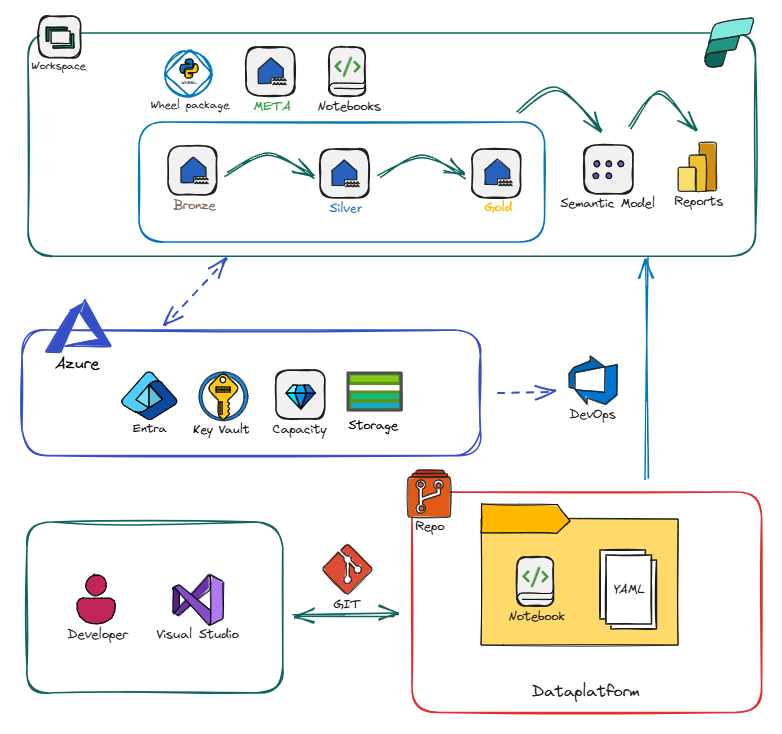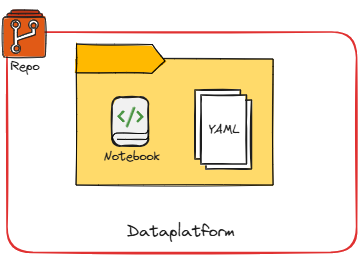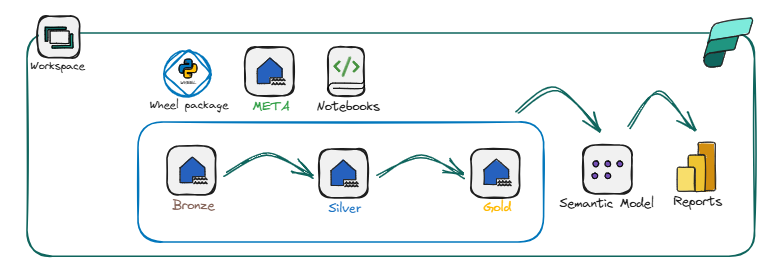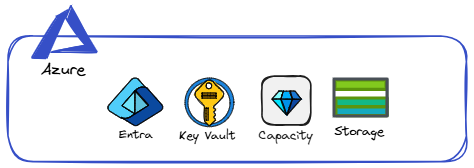Intro about the basics
What is EasyFabric?
EasyFabric automates your entire data platform workflow. As a developer, you only write notebooks and YAML configurations in Visual Studio - EasyFabric handles everything else automatically through Azure DevOps pipelines.
The general idea is this: Create a bunch of yaml files with your wishes and a complete medaillon architecture will be created for you.
Overview of all components involved
Seems overwhelming at first probably. But you will make it.

EasyFabric is an end-to-end data platform automation solution that streamlines the entire data pipeline process, from ingestion to visualization. It combines the power of Azure services with automated DevOps pipelines to deliver a seamless data platform experience.
How Does It Work?
1. Write Your Code
Open Visual Studio and:
- Define configurations in YAML files
- Create notebooks (.ipynb) for your data transformations
- Commit your changes to the repository

2. EasyFabric Takes Over
The moment you push your code, EasyFabric deploys through DevOps pipelines the following:
- Your notebooks
- Creates and updates lakehouse tables
- Generates SQL endpoint views
- Updates semantic models
- Deploys Power BI reports
At this point all objects are available in the workspace of fabric:

All objects in the lakehouse will be empty when it's the first time they are deployed. To load data, you need to run a notebook or two. Loading data is a combination of the Wheel package, yaml config files and notebook(s).
3. Built-in Data Processing
The included wheel package automatically:
- Loads data from your sources to Bronze layer
- Transforms Bronze data to Silver with quality checks
- Converts Silver to Gold with business logic
Key Components
1. EasyFabric Wheel Package
The core Python wheel package provides:
- Data loading from source systems to Bronze layer
- Built-in data quality and transformation rules for Silver layer
- Business logic implementation for Gold layer
- Pre-built connectors and data handling utilities
- Metadata management capabilities
2. Development Environment
Developers only need to focus on:
- Visual Studio for development
- Creating/modifying YAML configuration files
- Developing (parts of) notebooks for custom transformations
3. Automated Pipeline Components
EasyFabric handles the automated deployment of:
- Lakehouse objects (tables)
- SQL endpoint views for Gold
- Metadata files (yaml configuration)
- Notebooks
- Semantic models
- Power BI reports
4. Azure Integration
Seamlessly integrates with:
- Azure Storage
- Azure Key Vault for secrets management
- Azure EntraID
- Fabric Capacity management (on the roadmap)

In this documentation all configuration files are explained. So take some time to understand the defaults and start deploying a complete fabric environment.